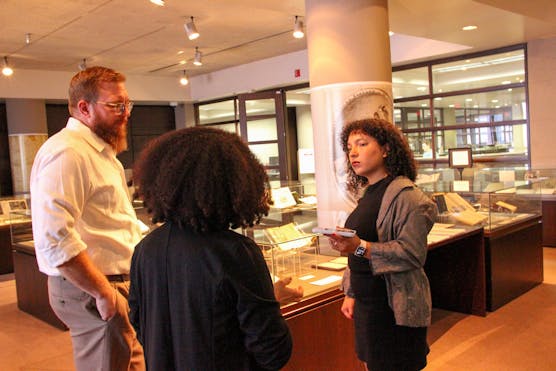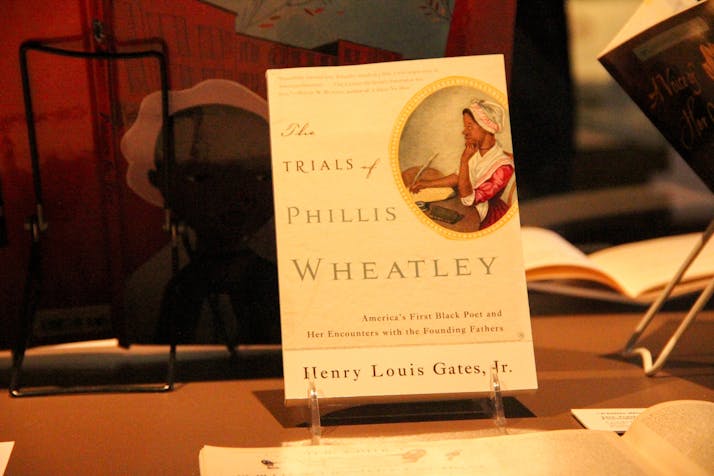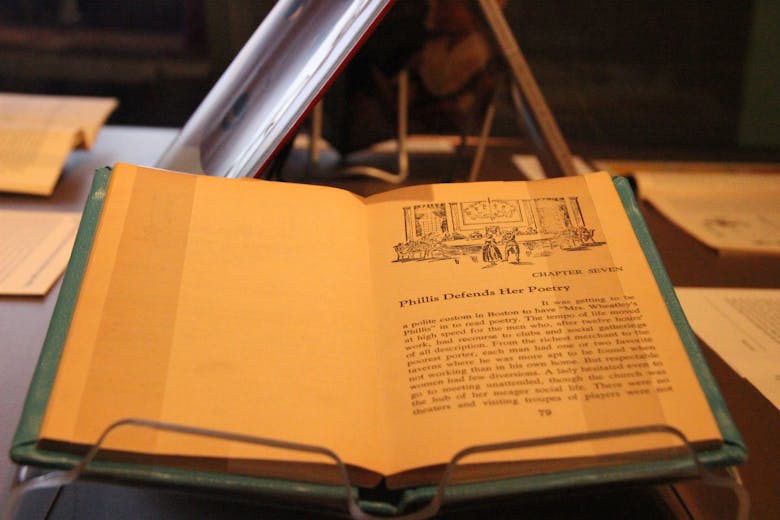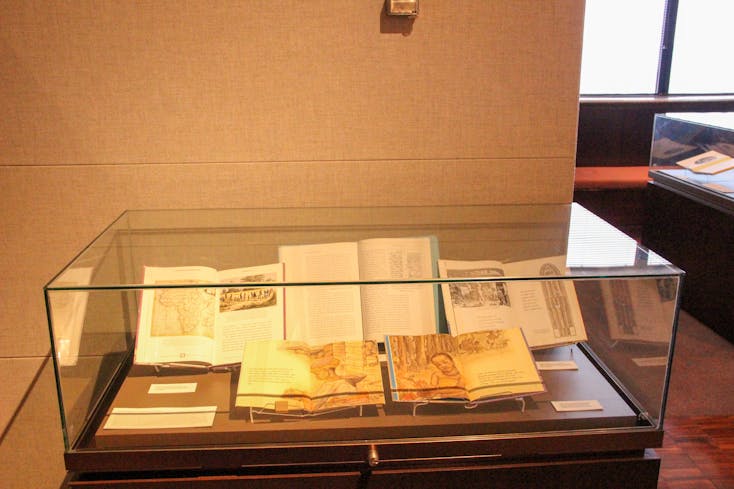In 1773 — 250 years ago — Phillis Wheatley published “Poems on Various Subjects, Religious and Moral.” She became the first African American woman to publish a book of poetry and only the third colonial American woman of any race to publish a book.
To celebrate the publication’s anniversary, Brigitte Fielder and Jonathan Senchyne, associate professors at the University of Wisconsin-Madison, curated an exhibit in Memorial Library’s Special Collections that will run until Dec. 22, 2023.
The highlight of the exhibit is a copy of the 1773 first edition of Wheatley’s “Poems on Various Subjects, Religious and Moral” that includes an engraved portrait of Wheatley, the first known portrait of an African American woman figure.
Fielder and Senchyne told The Daily Cardinal that Wheatley’s “landmark” book is vital to American, African American and women’s literary history.

Left to right: Jonathan Senchyne and Brigitte Fielder, associate professors at the University of Wisconsin-Madison, interview with Cardinal writer Clara Zimban (rightmost).
“But we didn’t want to say it happened in 1773 and leave it then,” Senchyne said. “The exhibit is really framed around the abundance of materials through which her image, her poetry and her influence have circulated continuously through the last 250 years.”
Threads of the exhibit show how Wheatley has been represented toward children, particularly for African-American children, Senchyne said. The exhibit shows how her work was reprinted by abolitionists in the late 18th and 19th centuries and how Jim Crow and Civil Rights Movement activists “used her work to form a curriculum and Black literary history formally within schools and institutions.”

Among the abundance of material showcased in the exhibition, Fielder and Senchyne deliberately centered Black voices who have responded to Wheatley’s work and harnessed it in African American liberation movements as well as Black feminism discourse.
Fielder explained that white-led institutions have historically “dismissed and erased” Black women’s contributions to literature.
“We see, in many ways, a fuller and more robust conversation about her work in African American-centered literary studies which aren’t mired by the usual forms of racism,” Fielder said. “We also see a lot more attention given to her by Black women thinkers.”

For example, the exhibit refers to Amanda Gorman, who in 2017 became the United States’ first-ever National Youth Poet Laureate and in 2021 became the youngest inaugural poet in American history, at 22 years old.
Gorman was denigrated in 2021 along overtly sexist and racist lines by far-right publications. One of her tweets is included in the exhibit — Gorman quotes a white supremacist comment Thomas Jefferson made toward Wheatley.
The forces attempting to silence Black women, keeping them in the margins of cultural production, still exist in today’s America and in the exhibit are exemplified by Gorman’s experience. To face these oppressive forces and find the courage to use her voice, Gorman thought back to Wheatley, whose legacy lives on in the various ways her image circulates in contemporary conversations.
Whenever I feel unable to write, I remember that Thomas Jefferson singled out young black poetess Phillis Wheatley with shallow disdain: "Among the blacks is misery enough, God knows, but no poetry." Then I crack my knuckles and get to work. https://t.co/hNyigm6IBC
February 1, 2021The exhibit also showcases a variety of letters and poems that Wheatley and her friends sent to each other. Fielder and Senchyne aimed to paint a picture of the intellectual and artistic support network existing among Black figures in 18th-century New England.
“They were keeping correspondence with one another…supporting each other's lives [and] artistic endeavors, whether it be poetry or visual art. We try to keep that thread present throughout the exhibit,” Senchyne said.
Despite the plethora of themes and ideas the exhibit raises, Fielder and Senchyne said studying Wheatley and figures like her wasn’t always a possibility in academia.
“We both, at one point in graduate school, tried to propose teaching courses on early African American women writers, specifically just a course on early African American women writers. And we were told that there's not enough material,” Senchyne said.
However, the exhibit elucidates just how fundamental and disseminated Wheatley’s work was and continues to be.
“A theme of the exhibit is abundance,” Senchyne said. “The abundance of Wheatley’s work, the circulation of her image, her influence, and her presence ever since she emerged in the English literary world.”

This exhibition is a testament to how rich Wheatley’s legacy is in culture. She has inspired and empowered people for the past quarter of a millennium in countless ways, including those who lived at the same time as she did all the way through the present.
Yet when discussing Wheatley’s work, Fielder added, it is essential not to isolate her from the community of Black people in which she was embedded — people who fueled her work and whomshe inspired in return.
“Framing Wheatley as ‘first’ has often been used toward ‘exceptionalism,’ and imagining her as a special kind of Black woman — a lone genius — when, in fact, she’s an example of Black people’s capabilities,” Fielder said.
“Those framings of ‘firsts’ oftentimes erase the context. She's not the only Black poet writing. There's Jupiter Hammon, who is also writing. She's not the only creative artist who was enslaved either. Understanding Black people in communities and not only in that kind of ordering is important,” Fielder added.








